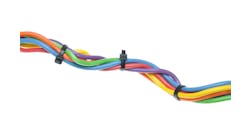Contrary to common conceptions, bioreactors have more sophisticated analysis and control and with the advent of at-line analyzers more extensive opportunities than chemical reactors. The specialty chemical industry can get a preview of the future from the biopharmaceutical industry. Bioreactor's have extremely tight pH and temperature control requirements and routinely have turbidity and smart capacitance probes for online measurement of cell density and viability, respectively. Most recently, at-line analyzers with auto samplers have been developed to provide cell diameter, cell Osmolality, culture nutrient concentration, dissolved carbon dioxide, and by-product concentrations. Best practices use a lab optimized industrial DCS in research and development to automate and optimize experimentation and facilitate technology transfer to commercialization.
In this discussion we focus on mammalian cell cultures since nearly all new biopharmaceuticals are complex proteins that require the sophistication of a mammalian cell for production. The mammalian cell can be viewed as a reactor with incredible complexity and capability. The reactants are principally oxygen, a sugar (glucose) and a protein (glutamine).
Changes of a tenth of pH or degree centigrade can have a noticeable effect on yield. Plots of cell growth rate and product formation rate versus temperature or pH have relatively narrow peaks. The peaks are different for cell growth and product formation. It is critical that there be no overshoot of a temperature setpoint because the slope to the right of the peak is steep potentially causing cell death. There is of course the initial temperature and pH setpoint response at the start of the batch. As more is learned about optimum operating conditions a change in temperature and pH called a shift is configured to promote product formation later in the batch after the cell population is well established.
Disturbances from changes in cell metabolism are extremely slow with a time lag hours to days. Since a mammalian cell batch takes 2 weeks, saving minutes on a faster temperature or pH setpoint response is inconsequential. As a result, controllers do not need to be tuned to minimize rise time and maximize disturbance rejection. The main objectives are to eliminate setpoint overshoot and cycling. The solution might seem to be simple in terms of just using a low controller gain until you realize that unless you also increase the reset time you will end up with overshoot and a slow cycle from an unbalance of integral and proportional action. To prevent slow rolling oscillations, the product of PID gain and reset time must be greater than twice the inverse of the integrating process gain as noted on the bottom of slide 21 of the Emerson-2012-Exchange-Effective-Use-of PID-Features-for-Control-and-Optimization. If a very slow rise time is permissible a PID structure of PD on PV and I on error or two degrees of freedom shown on slides 19 and 20 can be used to prevent overshoot. A faster response without overshoot can be gained by using a Structure of PI on error (slide 18) and a setpoint filter time equal to the reset time (slide 38).
For an increase in bioreactor pH and temperature setpoint, overshoot of the manipulated variable (MV) is undesirable. An MV overshoot for an increase in the pH setpoint can cause a large amount of sodium bicarbonate to be added that can build up sodium concentrations leading to an increase in cell osmotic pressure and membrane rupture. An MV overshoot for an increase in the temperature setpoint may lead to hot spots since mixing is minimal because mammalian cell membranes are easily broken by agitation.
Yeast, fungi, and bacteria have cell walls. The bioreactors (e.g., fermenters) for these cells can have much higher agitation rates and the cells are much less sensitive to pH and temperature conditions. Overshoot of the MV and PV may be permissible. Alcohol fermenters typically don't have pH control.
Split range oscillations are problematic for pH control because it can lead to periodic addition of sodium bicarbonate and an increase in cell pressure and membrane rupture. A setpoint rate limit (up direction) in the analog output block for sodium bicarbonate addition as noted on slide 39 can provide a slow change in the direction of adding sodium bicarbonate. A setpoint rate limit (down direction) in the analog output block for carbon dioxide can provide as slow approach to the split range point. In order to prevent integral action in a pH controller output from changing faster than the rate limit, the positive feedback implement of integral action shown on slide 15 must be used with the external-reset feedback option (e.g., dynamic reset limit) enabled.
Dissolved oxygen is controlled by the split range manipulation of air and oxygen to meet the orders of magnitude increase in oxygen demand as the batch progresses. In the pre-exponential growth phase when cell concentration and oxygen demand are low, the response appears to be integrating. At the inflection point in the cell concentration profile of the exponential growth phase the response becomes self-regulating from a high oxygen uptake rate. A smart split range point (e.g., 0-16% air and 16-100% oxygen for equal flow ranges) can account for the change in final control element gain and an adaptive tuner can compensate for the change in process dynamics with oxygen demand. A relatively broad range of permissible DO operating conditions are generally permissible so slow tuning is OK.
The DO controller can interact with the pH controller. The interaction in terms of dissolved carbon dioxide and oxygen in the culture is rather minimal. However, if the air, oxygen, and carbon dioxide gas share the same gas piping or sparge system or bubble patterns get disrupted, decoupling is needed. Model predictive control can eliminate the interaction or a half decoupler can be used to minimize the interaction. The half decoupler takes the DO controller output as a feedforward to the pH controller. The DO controller is also tuned less aggressively since the cells are less sensitive to DO than pH.
The oxygen uptake rate (OUR) and the carbon dioxide production rate (CPR) can provide an inferential measurement of cell metabolic activity, principally cell growth rate. The air or oxygen flow rate manipulated by the DO controller provides a reasonable estimate of the OUR. A more sophisticated OUR calculation uses the measurement of oxygen in the vent gas provided by a mass spec. A CPR calculation requires a mass spec, vent gas flow measurement, and carbon dioxide reagent flow measurement. For batch fermentations where all charges are made at the beginning of the batch, a loss in weight can be used as an inference of CPR.
Mass flow controllers (MFC) are normally used for air, oxygen, and carbon dioxide flow. The secondary MFC should be tuned much faster than the primary DO and pH controllers. External-reset feedback of a fast measurement of actual gas flow should be used to prevent violation of the cascade rule and the burst of oscillations seen for large setpoint changes.
The Nova BioProfile Flex analyzer and automatic sampler has opened the door to an incredible array of opportunities by accurately measuring cell density, diameter, and osmotic pressure and dissolved carbon dioxide, glucose, glutamine, glutamate, and undesirable by products such as lactate and ammonium. The ratio of glucose to glutamine concentration can be controlled and optimized. The slope of the profile of viable cell density can be controlled. These advanced control systems implemented in a lab optimized DCS can enable more rapid and effective experimentation for maximizing yield as discussed in the April 2012 Control Talk column "New Paradigms in Lab Control Systems."
The main limitation left to be addressed is the offline analysis of product concentration and protein folding that takes days to weeks. A prediction of end point product concentration and folding can be provided by data analytics along with an assessment and analysis of differences in batches. A neural network model may be able to predict a product formation rate from batch time and at-line analyzer measurements.
The enhanced PID developed for wireless (slides 40-50) can handle large and variable update times from at-line and off-line analysis. The enhanced PID does not need to be retuned as the update time changes. The maximum controller gain is simply the inverse of open loop process gain for a large analysis time.
In the pre-exponential growth phase when growth rate is low, the response for glucose and glutamine concentration appears to be integrating. At the peak in growth and product formation rate, the concentration response becomes self-regulating. However, the process time constant for a decrease in glucose or glutamine feed rate is often much larger than for an increase in feed rate.
Since commercial scale biopharmaceutical batches are worth millions of dollars, I advocate the use of 3 pH electrodes and middle signal selection to inherently ignore a single measurement failure of any type, to help ignore noise from bubbles and drift from sterilization and equilibration, and finally to improve diagnostics based on observed differences in electrode offset and speed of response. See the Control Talk Blogs "Checklist for pH Measurement" on 6/15/12 and "Checklist for pH Control" on 9/22/12 for more details.
For a better understanding of bioreactor principles see the ISA book New Directions in Bioprocess Modeling and Control. Here is the checklist to get into more effective and advanced bioreactor control.
•(1) Are electrodes with the least reference drift and measurement aging from sterilization used?
•(2) Is middle signal selection of 3 pH electrodes used to maximize pH accuracy and reliability?
•(3) Is PID structure of PD on PV, I on error or 2 degrees of freedom or a setpoint filter time equal to the reset time used to prevent overshoot of the temperature and pH setpoint?
•(4) Are analog output setpoint rate limits used with external-reset feedback for the split ranged outputs of pH control to prevent unnecessary addition of sodium bicarbonate?
•(5) Is a smart split range point used to account for changes in final control element gains?
•(6) Is an adaptive tuner needed to account for the change in process dynamics for DO control?
•(7) Can the sparge gas system be redesigned to minimize DO and pH interaction?
•(8) Is model predictive control or a decoupler needed to reduce DO and pH interaction?
•(9) Are the mass flow controllers of gas feeds tuned faster than the DO and pH controllers and is external-reset feedback used to prevent violation of the cascade rule?
•(10) Can cell growth rate be measured at-line or predicted from oxygen uptake rate?
•(11) Is an enhanced PID be used to provide glucose and glutamine concentration control?
•(12) Can the glucose to glutamine ratio be optimized?
•(13) Can online data analytics be used to detect and analyze batch variability and predict product endpoint?
•(14) Can an inferential measurement of product formation rate be developed from at-line analysis?
•(15) Can an enhanced PID be used for cell concentration profile control by manipulation of glucose concentration?
•(16) Can an enhanced PID be used for product formation rate profile control by manipulation of the glutamine to glucose ratio?
Warning: The checklist was prepared while listening to Meat Loaf's Live Performance with the Melbourne Symphonic Orchestra




